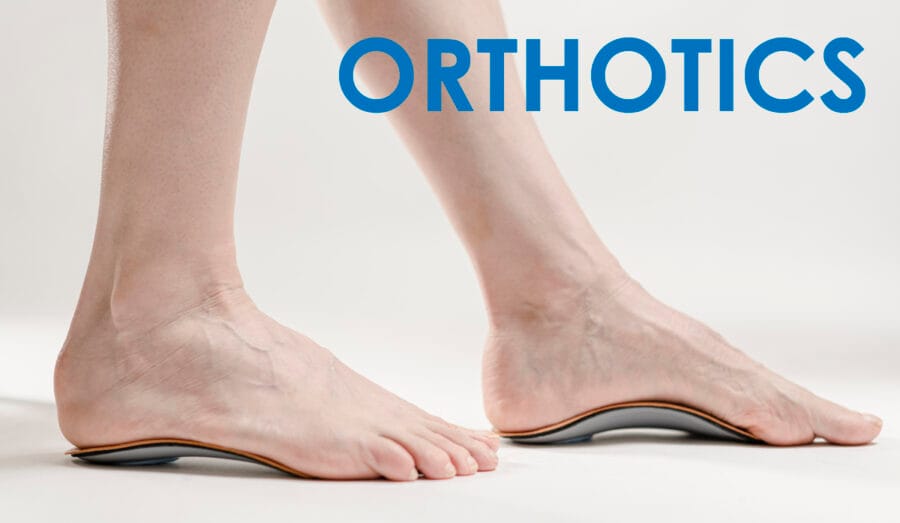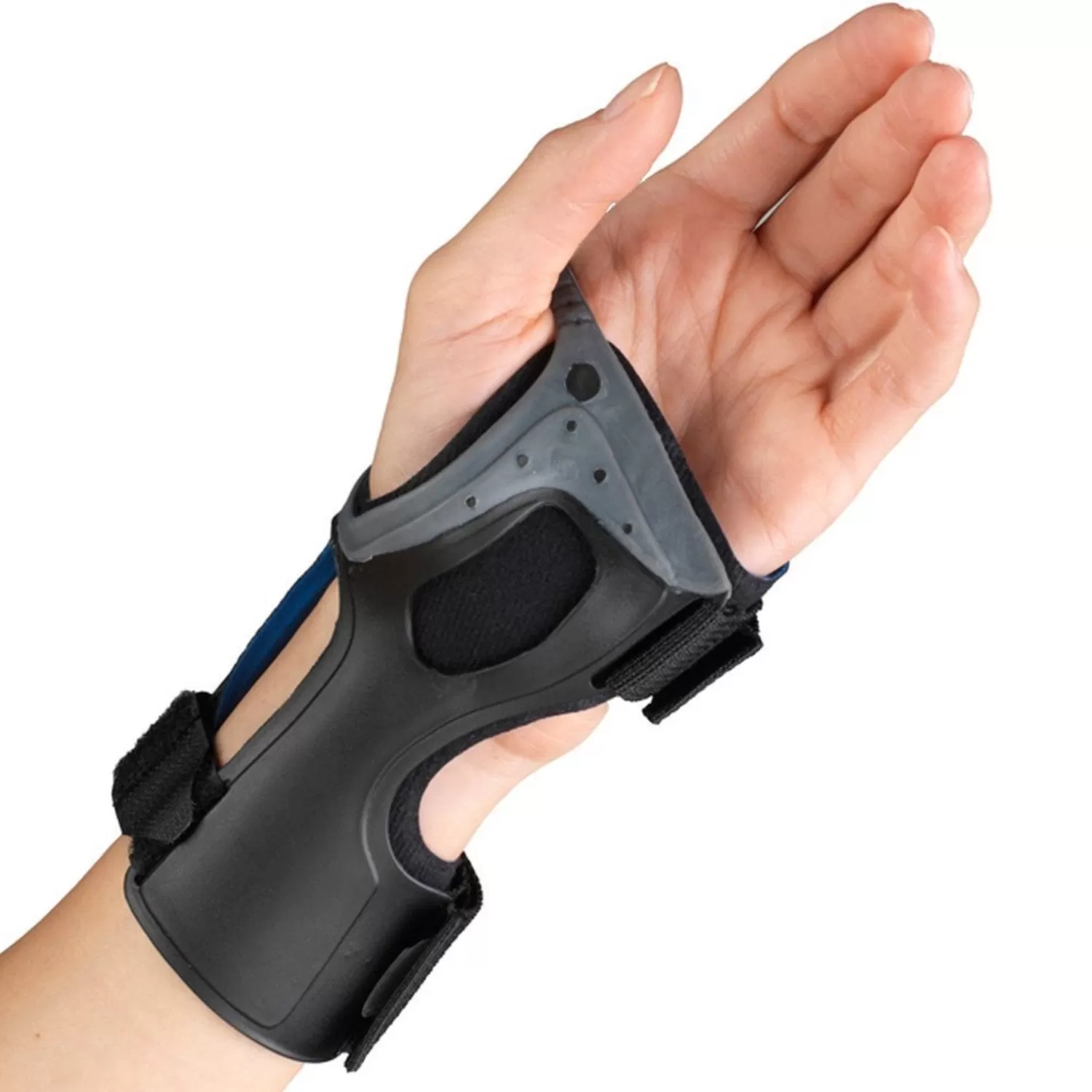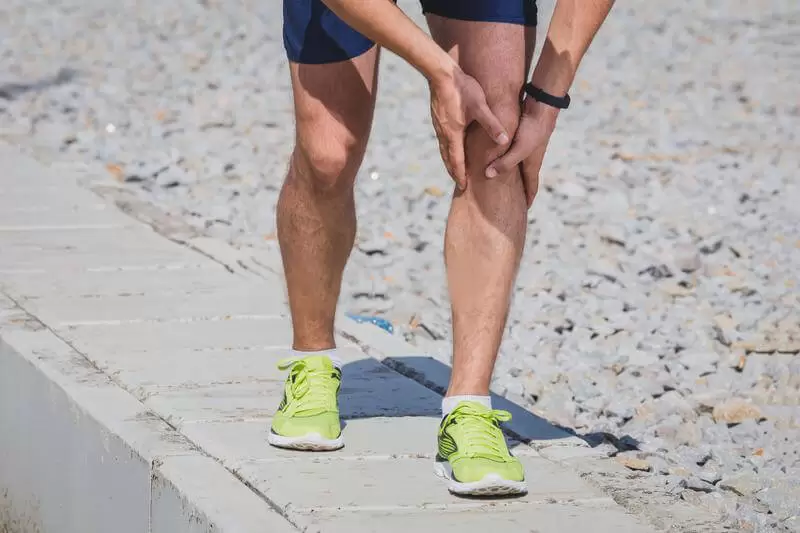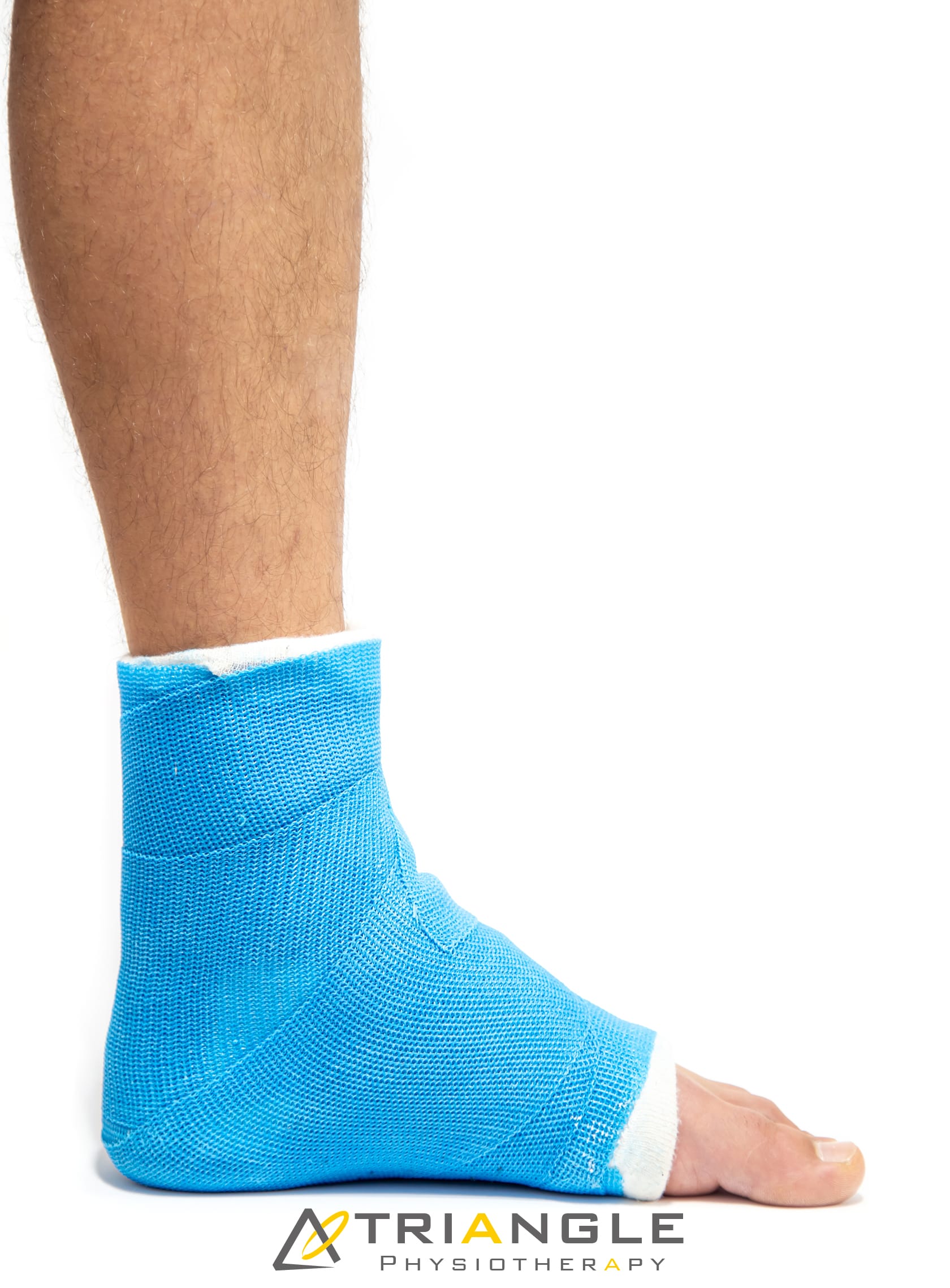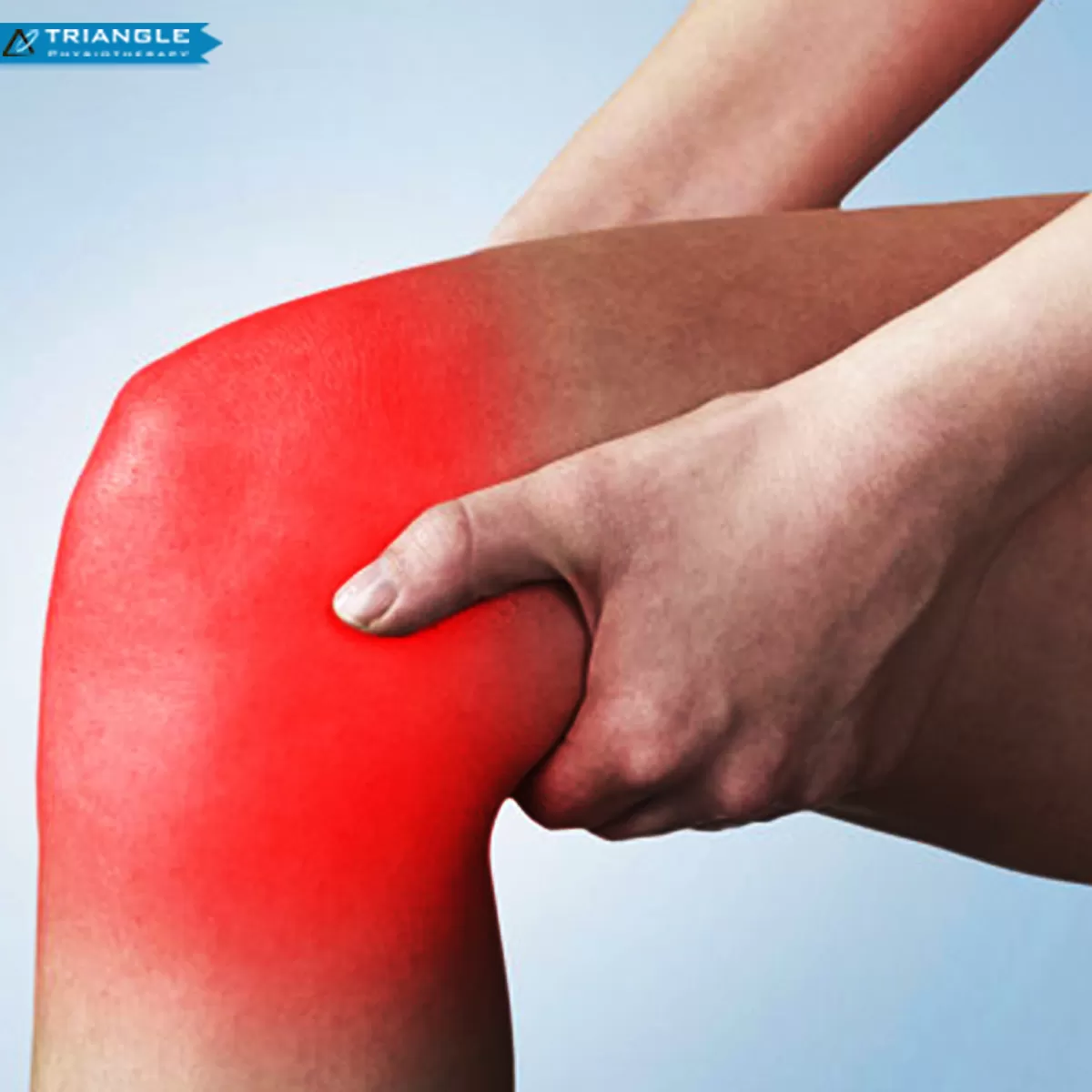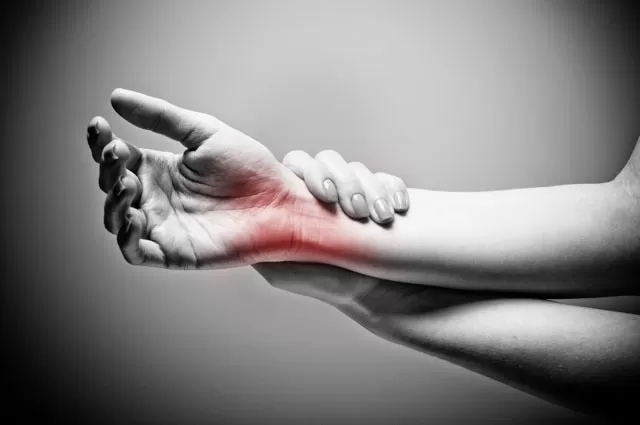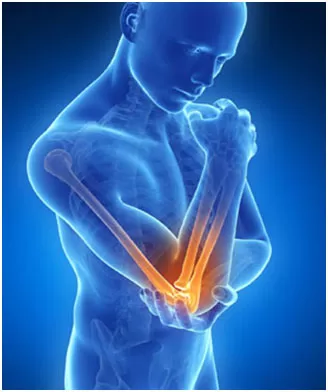What are orthotics?
Orthotics are custom made inserts that are worn inside your shoe to control abnormal foot function.
Orthotics solve a number of biomechanically related problems, for example, ankle and knee pain, pelvis, hip, spinal pain. This is achieved by preventing misalignment of the foot, which significantly alters the way in which the bones move within their joints.
Orthotics work for the feet the same way prescription glasses work for the eyes.
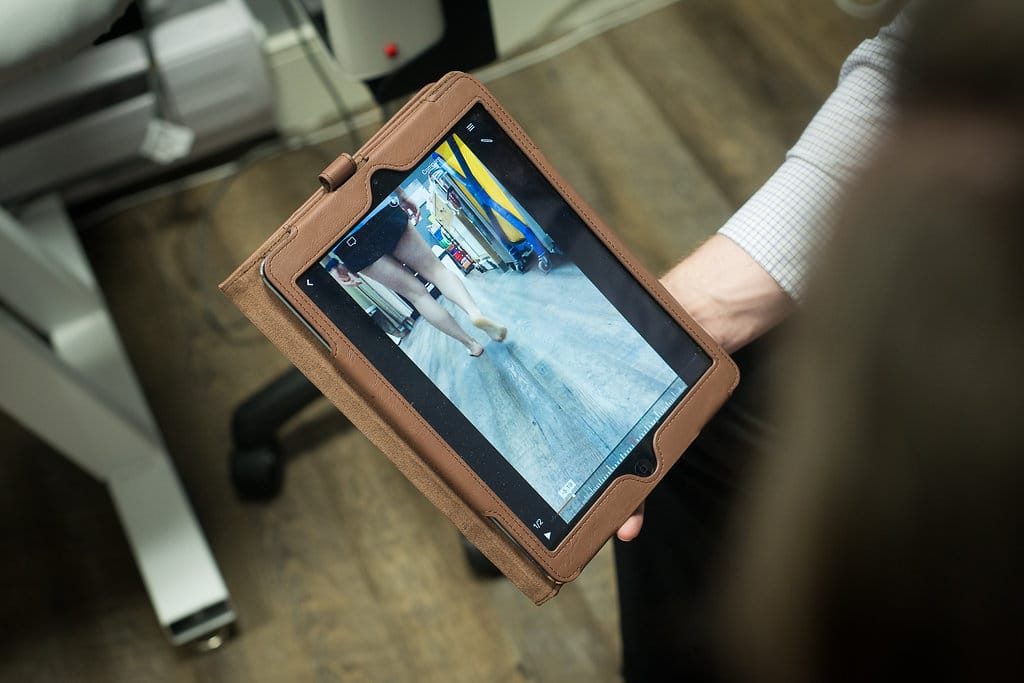
Who can benefit from orthotics?
Custom orthotics can be used for all ages and for a variety of activities and can be made to fit any type of shoe.
Where can I get the best custom orthotics?
The best custom orthotics can be purchased from a clinic where a chiropodist or qualified health professional conducts an assessment and a 3D scan of your feet to determine the best orthotics for you. The 3D Scan is then sent to a lab where the scan is used to manufacture your orthotics.
Triangle Physiotherapy has qualified health practitioners that can assess you and recommend the best custom orthotics for you.
How can Orthotics correct foot conditions?
The best custom orthotics can:
- Help balance pressure placed on the feet by redistributing the weight appropriately
- Help stabilize the heel
- Support the arch of the feet
- Provide cushioning to delicate and inflamed areas of the feet that arise from too much walking, jogging, running, etc.
What is a knee brace and how can it help me?
A knee brace can help support and stabilize an unstable knee due to injury or osteoarthritis. The best knee brace will offer the support you need in order to balance and evenly distribute your weight in order to have a more comfortable walk or run.
What conditions can a knee brace help with?
Whether it’s a knee sprain, arthritis, torn ACL, runner’s knee, knee instabilities or knee discomfort, the best knee braces help support and manage pain.
When should I start wearing a knee brace?
Once you start experiencing knee pain or discomfort or find that the knee is unstable while walking or running or after you have had knee surgery , book an appointment with one of our health practitioners who can assess you and recommend the best knee brace for you.
“Custom orthotics and knee braces can significantly improve mobility and reduce pain. Triangle Physiotherapy offers expert services across the GTA, including Physiotherapy in Etobicoke, Oakville, North York, Toronto, Lawrence Park, Queens Quay, Erin Mills, Mississauga, and Liberty Village. Our experienced team can help you find the best solutions to support your foot and knee health, ensuring a personalized approach to your treatment.”
What is a Custom Molded Splint?
It is a hand-made brace which is usually made from a thermoplastic material and requires the skill of a therapist to measure, trace, and adjust in order to accurately fit their patient’s hand. Custom splinting is used to either immobilize or mobilize structures to promote healing or function.
How is a Custom Molded Splint made?
While the procedure itself is fairly straightforward, the making of the splint takes a lot of expertise and practice. A hard sheet of thermoplastic material is used to create a pattern that is perfectly molded to the patients’ hand. This template is then heated to over 160° in order to allow the temperature-sensitive material to become flexible. After it cools down, the material is placed and molded directly on the patient, providing a fit matching the curves and contours of the client’s hand. Splinting is a very effective way to facilitate a patient’s recovery for a variety of conditions.
Also read, Best Physiotherapy Clinic in Etobicoke
Custom Splints vs. Over-the-Counter Splints
Over-the-counter splints, which can be found at drugstores or online stores, are typically available in small, medium, and large sizes. They are not created to specifically match your hand and can be difficult to adjust. By investing in a custom splint that is made to fit your hand specifically, you will be more likely to use the splint and to achieve better clinical outcomes.
Benefits of Custom Molded Splints
A common group of diagnoses for which splinting is indicated includes: tennis elbow, golfer’s elbow, trigger finger, carpal tunnel syndrome, and many others. These types of conditions are caused by overuse of muscles that cross a specific joint or by compression caused by the joint itself. Wearing a splint prevents movement of the relevant joint which allows affected structures to rest, and along with a therapy program, can resolve symptoms. Splints that are specifically tailored to a patient’s functional limitations can make a difference in a person’s life by relieving pain, stabilizing joints, and protecting vulnerable tissues. This, in turn, promotes physical well-being.
Aslo read, Best Physiotherapy Clinic in Mississuaga
Additional benefits from splinting can be found in those with degenerative arthritis. Osteoarthritis often first manifests at the joint located at the base of the thumb, also known as the carpometacarpal (CMC) joint. The CMC is used excessively in our daily lives, especially for those that have occupations that require the forceful use of the thumb (like hand therapists). This joint can break down over time, leading to joint instability and pain. A custom splint provides the external support the thumb needs to compensate for the internal support the joint no longer provides. Patients often notice immediate pain relief with the use of a splint and, with accompanying education from the therapist, become more functional with daily activities.
Though splinting can be highly effective for a wide variety of conditions, it is only a supplement to treatment. Long-term splint usage is rarely indicated and should be discontinued based on healing and symptoms. Splint wear without a therapy program can lead to joint stiffness, weakness, and other problems. Splinting can prevent further injury, but does not repair the body. Splinting and a comprehensive therapy program work hand-in-glove to resolve the underlying pathology while preventing further structural damage. The art of Custom Splinting has changed drastically over the past several years. With advanced qualities of the thermoplastic material and splinting accessories, along with increased knowledge of biomechanics and theory, wrist and hand splinting has become an effective and important part of therapeutic treatment for upper extremity disorders.
For optimal recovery and support, custom splints and orthoses play a crucial role in managing injuries and conditions affecting the hand, elbow, and shoulder. If you require physiotherapy services to complement your treatment, clinics in physiotherapy Etobicoke, Oakville, North York, Toronto, Lawrence Park, Queens Quay, Erin Mills, Mississauga, and Liberty Village offer expert care and personalized solutions to help you recover and maintain joint health.
Pacifying the Pain – All about Patella Tendon Tears
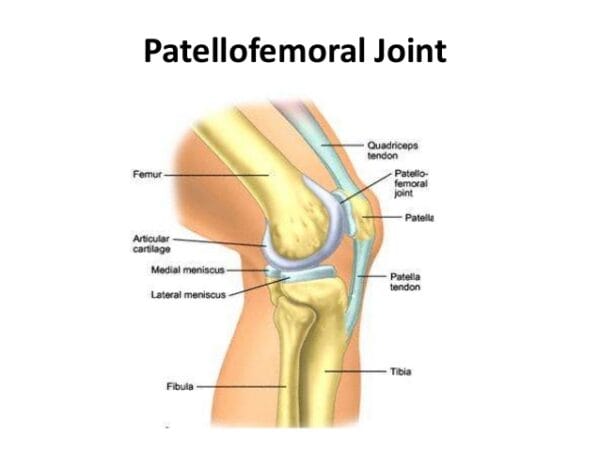
Despite it being named a “Tendon”, the patella tendon is both a ligament and a tendon. It connects to two different bones, the patella and the tibia. The patella tendon works in unison with the quadricep muscles and quadriceps tendons allowing them to straighten the knee. The tear within the patella tendon is either partial or complete and can be a disabling injury:
- Partial tear- More frayed and not complete, (think of a rope that is not completely torn)
- Complete Tear- The tissue is torn into two complete pieces
There are numerous causes that can contribute to the tear of a patella tendon:
- Falls
- Jumping
- Patellar tendonitis- inflammation of the patellar tendon thus weakening the tendon, causing small tears.
- Chronic disease – Chronic renal failure, rheumatoid arthritis, Diabetes mellitus & metabolic disease, etc.
- Infection
- Surgery
Also read, Best Physiotherapy Clinic Mississauga
Most patients have stated that they had felt a popping or tearing sensation when the patella tendon has torn. Additional symptoms recorded were:
- Indentation at the spot where the patella tendon is located
- Bruising
- Tenderness
- Cramping
- Shift of the kneecap to thigh, due to un-attachment
- Difficulty walking due to weakness in the knee
Also read, Physiotherapy Oakville
Once the initial pain and swelling has subsided, physiotherapy treatments can be started. Physiotherapy can restore strength and range of motion. Depending on the intensity of the injury, a brace may need to be worn. While the brace is worn, straight leg exercises are often prescribed to strengthen the quadriceps muscles. As the patellar tendon heals, eventually the brace may be removed, allowing the patient to move freely with a greater range of motion, with more exercises being put into use as healing progresses.
Recovery from patellar tendon tears is possible, and most individuals are able to return to work and regular activities. Even though patients may feel stiffness in the region after recovery, most regain nearly equal motion compared to the uninjured leg. At Triangle Physiotherapy, we are able to dispense custom-fit braces to aid in the recovery of patellar tendon tears. For more information visit our custom braces page at: http://www.trianglephysiotherapy.com/services/custom-bracing
Recovering from a patella tendon tear requires a comprehensive approach, including effective physiotherapy to restore strength and mobility. If you’re seeking professional physiotherapy services for tendon injuries, there are clinics in physiotherapy Etobicoke, Oakville, North York, Toronto, Lawrence Park, Queens Quay, Erin Mills, Mississauga, and Liberty Village. These locations offer expert care and customized treatment plans to help you recover fully and get back to your active lifestyle.
There are many forms of fractures, each causing a dilemma in our lives and requiring the help of a physiotherapist in order to heal safely and adequately. One of the most common types of fractures seen in sports medicine today is called a “hairline” or “stress” fracture. Hairline fractures are caused by repetitive strain and excess training. Hairline fractures are minute cracks on the bones, which can become severe if not immediately treated. The main causes of hairline fractures are:
- Traumatic Incidents
- Repetitive Stress
- Pathological
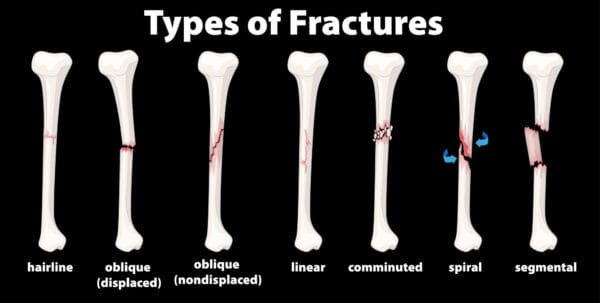
Also read, Physiotherapy Clinic in Mississauga
Causes of Fractures
Basically, hairline fractures are caused by the depressed response of the bone with the ground reaction forces that are applied to the bones during certain activities such as: running, jumping, or walking. Symptoms may include pain and tenderness to the affected bone. Repetitive stress or a sudden fall or strike to the area can also cause hairline fractures.
Treatment of Fractures
The best way to treat a hairline fracture is to refrain from any activities that can aggravate the injury. Recovery time can span from two weeks to a month and a half. Once the bone is healed from its minute cracks, you can gradually resume normal activities. In extreme circumstances, the affected area must be put at rest and must be immobilized by casting or bracing. The stages of healing a fracture through physiotherapy are as follows:
- Muscle Assessment
- Joint Mobilisation
- Massage Therapy
- Heat and Electro Therapy
- Gait Education
Also read, Physiotherapy Oakville
Shoe inserts like supportive orthotics and walking crutches may also be recommended by your physiotherapist. Treatment through physiotherapy is advised through strengthening exercises that are non-weight bearing like swimming. Luckily, hairline fractures rarely need surgery because they can easily be mended with just two weeks of rest. However, the injury can worsen if not given the proper medical attention.
If you happen to suffer from a hairline fracture and you are looking for a way to relieve pain, and recover from an injury, adding physiotherapy to a routine wellness plan can maximize recovery time and optimize your healing process. Our physiotherapists at Triangle Physiotherapy can be a powerful ally when combating daily stress, muscle pain, and general health issues regarding hairline fractures. Not only does physiotherapy relieve pain, increase energy levels, and improve overall physical and mental performance, it prevents further injuries.
Our More Locations
Physiotherapy Etobicoke | Physiotherapy Oakville | Physiotherapy North York | Physiotherapy Toronto | Physiotherapy Lawrence Park | Physiotherapy Mississauga | Physiotherapy Queens Quay | Physiotherapy Mississauga Erin Mills | Physiotherapy Liberty Village
The experienced, professional physiotherapists at Triangle Physiotherapy are available at eight convenient locations:
- Physiotherapy Etobicoke – Triangle Physiotherapy Etobicoke
- Oakville Physiotherapy Clinic – Triangle Physiotherapy Oakville
- Physiotherapy North York – Triangle Physiotherapy North York
- Mississauga Physiotherapy Clinics – Triangle Physiotherapy Mississauga
- Downtown Physiotherapy Clinics – Triangle Physiotherapy King West
- Uptown Physiotherapy Clinics – Triangle Physiotherapy Lawrence Park
- Physiotherapy Clinic Downtown Toronto – Triangle Physiotherapy Queens Quay
- Physiotherapy Clinics Mississauga – Triangle Physiotherapy Erin Mills
Recovering from a hairline fracture requires careful management and effective physiotherapy to restore strength and prevent further injury. If you are seeking professional physiotherapy services to support your recovery, there are clinics in physiotherapy Etobicoke, Oakville, North York, Toronto, Lawrence Park, Queens Quay, Erin Mills, Mississauga, and Liberty Village. These locations offer specialized care and personalized treatment plans to help you heal properly and regain full function.
A knee sprain is an injury of the ligaments; tough bands of fibrous tissue that connect the bones of the upper and lower leg at the knee joint. One of the main forms of knee sprain is in the anterior cruciate ligament (ACL). The ACL and the posterior cruciate ligament (PCL) bridge the inside of the knee joint, forming an, “X” pattern that stabilizes the knee against front-to-back and back-to-front forces.
There are certain movements in the knee that cause a sprain in the ACL such as:
- a sudden stop;
- a twist,
- pivot, or change in direction at the joint;
- extreme over-straightening (hyperextension);
- or a direct impact to the outside of the knee or lower leg.
These injuries are quite common among athletes in sports such as football, basketball, soccer, rugby, wrestling, gymnastics, and skiing.
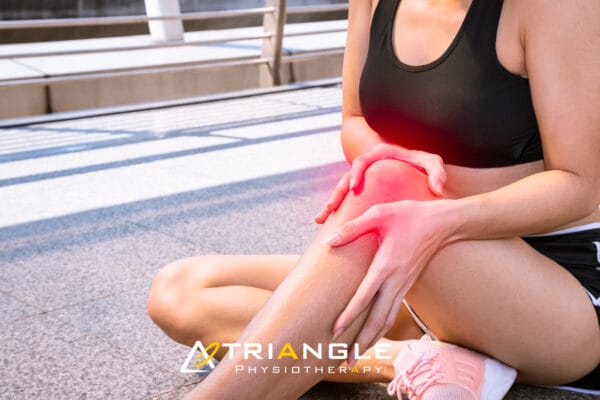
It is suggested that when one knee ligament suffers a sprain, there is a good chance that the other parts of the knee may also be injured, most commonly the ACL. Knee sprains are very common. ACL sprains tend to cause more significant symptoms compared to MCL injuries.
The most frequent signs of an ACL sprain are:
- A pop heard or felt inside your knee at the time of injury
- Significant knee swelling within a few hours after injury
- Severe knee pain that prevents you from continued participation in your sport
- Black-and-blue discoloration around the knee
- Knee instability- the feeling that your knee will buckle or give out
Treatment of an ACL Sprain
A physiotherapist will examine both knees, comparing the injured knee to the uninjured one. During this exam, the physiotherapist will check your injured knee for signs of swelling, deformity, tenderness, fluid inside the knee joint, and discoloration. If the patient does not have too much pain and swelling, a physiotherapist will then evaluate the knee’s range of motion and will pull against the ligaments to check their strength. During the exam, the patient will have to bend their knee and the physiotherapist will gently pull forward or push backward on their lower leg where it meets the knee.
Based on the results of the patient’s exam, diagnostic tests may need to be performed to further evaluate the condition of the patient’s knee. These tests may include standard X-rays to check for ligament separation from bone or fracture. Tests may also include an MRI scan or a camera–guided knee surgery (arthroscopy). The expected duration of recovery depends on the severity of the patient’s knee sprain, their rehabilitation program, and what type of sports the patients play. In general, milder sprains heal within 2-4 weeks, whereas other types may take 4-12 months.
There are many ways of preventing ACL knee sprain, to help sports related injuries you can:
- Warm up and stretch before participating in athletic activities
- Do exercises that strengthen the leg muscles around the knee, especially the quadriceps.
- Avoid sudden increases in the intensity of a training program. Do not push too hard or too fast. Gradually increase intensity.
- Wear comfortable, supportive shoes that fit your feet and fit your sport
About 90% of people with ACL injuries can expect a full recovery after proper treatment and a good physical therapy program. As a long-term complication, some patients who suffered from an ACL sprain eventually develop pain from osteoarthritis in the joint where the knee has been injured. This symptom may not become present until 15 to 20 years after the initial knee injury.
Call a professional when:
- Knee becomes very painful or swollen
- Cannot bear weight
- Feels as if it will buckle or give out.
Click HERE to book an appointment with a physiotherapist at one of our eight locations.
- Physiotherapy Etobicoke – Triangle Physiotherapy Etobicoke
- Oakville Physiotherapy Clinic – Triangle Physiotherapy Oakville
- Physiotherapy North York – Triangle Physiotherapy North York
- Mississauga Physiotherapy Clinics – Triangle Physiotherapy Mississauga
- Downtown Physiotherapy Clinics – Triangle Physiotherapy King West
- Uptown Physiotherapy Clinics – Triangle Physiotherapy Lawrence Park
- Physiotherapy Clinic Downtown Toronto – Triangle Physiotherapy Queens Quay
- Physiotherapy Clinics Mississauga – Triangle Physiotherapy Erin Mills
Recovering from an ACL sprain involves targeted physiotherapy to restore knee stability, strength, and mobility. If you need professional physiotherapy services for ACL rehabilitation, consider clinics in physiotherapy Etobicoke, Oakville, North York, Toronto, Lawrence Park, Queens Quay, Erin Mills, Mississauga, and Liberty Village. These clinics provide expert care and customized treatment plans to help you recover fully and return to your active lifestyle.
What is ALS?
Amyotrophic lateral sclerosis (ALS) is the most common type of adult-onset motor neuron disease. Neurological disorders are characterized primarily by progressive degeneration and loss of motor neurons. ALS involves upper and lower motor neurons and presents as an idiopathic, progressive degeneration of anterior horn cells and their associated neurons, resulting in progressive muscle weakness, atrophy, and fasciculations.
What are the symptoms of ALS?
ALS is a gradual-onset disease. The first initial symptoms of ALS vary from person to person. One person may have trouble with their grip, such as holding a cup or pen, while another person may experience a change in pitch in their voice while speaking. The rate at which ALS develops also varies from person to person, with the mean survival time ranging from three to five years.
Although there are cases in which people have lived five, and ten or more years. Onset symptoms can begin in the muscles that control speech and swallowing, or in the hands, arms, legs, or feet. Not all people who suffer from ALS experience the same symptoms as others or the same sequences or patterns of progression. Although, universally progressive muscle weakness and paralysis are experienced.
How is ALS diagnosed?
ALS is a somewhat difficult disease to diagnose. There is not one test or procedure to instantly establish the diagnosis of ALS. Through the use of clinical examination, and a series of diagnostic tests, often ruling out other diseases that mimic ALS, that a diagnosis can be established. A comprehensive diagnostic check-list includes most, if not all, of the following procedures:
- Electrodiagnostic tests- Electromyography (EMG) and Nerve conduction velocity (NCV)
- Blood & Urine studies
- Spinal tap
- X-rays including MRI
- Myleogram of cervical spine
- Muscle and/or nerve biopsy
- A thorough neurological examination
These tests are done at the discretion of the physician, usually based on the results of other diagnostic tests and the physical examination. There are several diseases that have some of the same symptoms as ALS, and most of these conditions are treatable.
What are the treatments for ALS?
Treatment of ALS can be done with physiotherapy, focusing on stretching and daily range of motion (ROM) exercises. Our physiotherapists at Triangle will focus on the emphasis of energy conservation and teach patients and caregivers methods for performing safe, efficient transfers. They can also provide instruction for strengthening exercise programs.
In one study, individualized, moderate-intensity, endurance-type exercises for the trunk and limbs performed 15 minutes twice daily were shown to significantly reduce spasticity as measured by the Ashworth scale. At Triangle, we may have to recommend wheelchairs to anticipate the patient’s future needs. Initially, a lightweight wheelchair should be rented, with future plans to purchase a heavier chair when the patient is no longer able to ambulate. Modifications will be recommended on the basis of the patient’s condition and tolerance for gadgets.
Click HERE to book an appointment with a physiotherapist at one of our eight locations.
- Physiotherapy Etobicoke – Triangle Physiotherapy Etobicoke
- Oakville Physiotherapy Clinic – Triangle Physiotherapy Oakville
- Physiotherapy North York – Triangle Physiotherapy North York
- Mississauga Physiotherapy Clinics – Triangle Physiotherapy Mississauga
- Downtown Physiotherapy Clinics – Triangle Physiotherapy King West
- Uptown Physiotherapy Clinics – Triangle Physiotherapy Lawrence Park
- Physiotherapy Clinic Downtown Toronto – Triangle Physiotherapy Queens Quay
- Physiotherapy Clinics Mississauga – Triangle Physiotherapy Erin Mills
Physiotherapy is a crucial component in managing ALS, helping to maintain mobility, reduce discomfort, and improve quality of life. For those seeking specialized physiotherapy services to support ALS management, there are clinics in physiotherapy Etobicoke, Oakville, North York, Toronto, Lawrence Park, Queens Quay, Erin Mills, Mississauga, and Liberty Village. These clinics offer expert care and personalized treatment plans tailored to the needs of individuals living with ALS.
Are you feeling a bit of a pain in the neck lately? Does your neck feel stiff, painful, tender, or are you not able to turn it and move around as much as you used to? You may be a victim of whiplash.
What is Whiplash?
Whiplash is most associated with traumatic events involving sudden acceleration-deceleration forces mainly on the neck. It can affect a variety of issues pertaining to your muscles, joints, bones, ligaments, discs, and nerves. Whiplash is mostly associated with car accidents, but other causes may include roller-coasters, bungee jumping, or a sports-related condition.
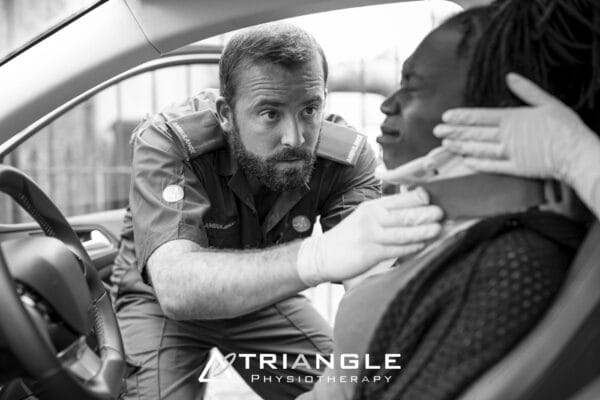
What are the symptoms of Whiplash?
Symptoms and severity of whiplash can vary significantly between people. The most commonly reported symptom is neck pain or stiffness. This can occur anywhere from immediately after the injury to several days after.
Symptoms may include:
- Neck pain or stiffness
- Headache
- Shoulder pain, arm pain, or upper back pain
- Dizziness
- Altered sensation
- Weakness
- Visual disturbances
- Hearing difficulties
- Difficulty speaking or swallowing
- Difficulty swallowing
How can Whiplash be treated?
Fortunately, most people recover from the pain and stiffness associated with whiplash in a matter of weeks, but some cases require longer recovery time and treatment from a physiotherapist. Healing time varies with the level of tissue damage and promptness of treatment. Most whiplash patients will start to feel better within a few weeks of the injury from physiotherapy treatment. At Triangle Physiotherapy, our physiotherapists will aim to:
- Reduce neck pain, headaches, and inflammation
- Normalise joint range of motion
- Gain strength in your neck
- Strengthen your upper back muscles
- Improve neck posture
- Normalize your muscles lengths and rest muscle tension
- Resolve any deficit in neural tissue extensibility
- Improve neck proprioception, fine motor control, and balance
- Improve your ability to cope with everyday activities
- Minimize your chance of future neck pain or disability
Whiplash injuries can take from a few days to several months to rehabilitate. Just as the symptoms and severity of whiplash can vary from person to person, so can the recovery time. The large majority of whiplash sufferers do recover with actively guided treatment. Depression and trauma-related anxiety may impact the healing process of whiplash. Please consult with a qualified health professional to give yourself the best chance of recovery.
Click HERE to book an appointment with a physiotherapist at one of our eight locations.
- Physiotherapy Etobicoke – Triangle Physiotherapy Etobicoke
- Oakville Physiotherapy Clinic – Triangle Physiotherapy Oakville
- Physiotherapy North York – Triangle Physiotherapy North York
- Mississauga Physiotherapy Clinics – Triangle Physiotherapy Mississauga
- Downtown Physiotherapy Clinics – Triangle Physiotherapy King West
- Uptown Physiotherapy Clinics – Triangle Physiotherapy Lawrence Park
- Physiotherapy Clinic Downtown Toronto – Triangle Physiotherapy Queens Quay
- Physiotherapy Clinics Mississauga – Triangle Physiotherapy Erin Mills
Recovering from whiplash requires a comprehensive physiotherapy approach to restore mobility, reduce pain, and improve strength. If you are looking for professional physiotherapy services to help manage whiplash recovery, consider clinics in physiotherapy Etobicoke, Oakville, North York, Toronto, Lawrence Park, Queens Quay, Erin Mills, Mississauga, and Liberty Village. These clinics provide expert care and tailored treatment plans to help you get back to your normal activities safely and effectively.
What is Carpal Tunnel Syndrome?
Carpal Tunnel Syndrome (CTS) is a wrist and hand condition that occurs when a nerve becomes pinched within a tunnel created by the bones of the wrist. The wrist is composed of 8 small bones called Carpals,which, along with ligaments, create a ‘Carpal Tunnel’ on the palmer side of the forearm. This tunnel creates a space for the passage of the Median nerve and theflexor tendons of the fingers. The Median nerve provides both sensory and motor function to the hand, and if it becomes compromised within this space, Carpal Tunnel Syndrome will occur.
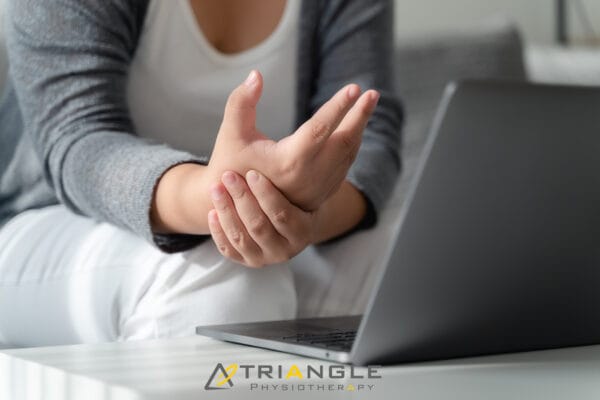
Symptoms:
Symptoms of CTS are numbness, pain, and weakness in the affected wrist and hand. Numbness and pain occur along the sensory distribution of the Median nerve, which includes the palmer side of the thumb, index finger, third finger and lateral half of the ring finger. The progression of symptoms is typically gradual, beginning with itching, tingling or mild burning, and in chronic cases can progress to complete numbness, and involve radiating pain up the arm, decreased grip strength and muscle wasting in the thumb.
Common Causes:
CTS is often due to a combination of multiple factors that result in increased pressure on the Median nerve in the carpal tunnel. This condition is rarely due to an issue with the nerve itself. A common contributing factor to CTS is size of the carpal tunnel, as the smaller the passageway, the greater the likelihood of tendon and Median nerve compression. Women on average have smaller and narrower carpal tunnels then men, making them more prone to CTS. Another contributing factor is injury or trauma to the wrist, because the resultant swelling increases the amount of pressure and decreases the amount of space within the carpal tunnel. Repetitive strain injuries to the wrist can cause inflammation and swelling of the synovial fluid surrounding the flexor tendons, which also decreases the space within the carpal tunnel. These repetitive strain injuries can often occur in the workplace, due to use of vibrating tools and machinery, or repetitive typing and use of a mouse at a computer workstation.
Treatment:
Physiotherapy is often used to help treat Carpal Tunnel Syndrome. Therapy for this condition focuses on proper education about the condition and necessary activity modification, prescription of stretching and strengthening exercises and therapeutic modalities as appropriate. Additionally, bracing can be used to help provide wrist support and stability. Wrist bracing is most effective at night to prevent wrist flexion, and during the day while performing repetitive wrist activities. Occasionally, surgical intervention is required for the treatment of CTS, in which the connective tissue creating the roof of the carpal tunnel is cut to create more room for the Median nerve. Physiotherapy rehabilitation is recommended post-surgery to ensure an optimal outcome.
For more information about Carpal Tunnel Syndrome, ask your physiotherapist at Triangle Physiotherapy and Rehabilitation!
Click HERE to book an appointment with a physiotherapist at one of our eight locations.
- Physiotherapy Etobicoke – Triangle Physiotherapy Etobicoke
- Oakville Physiotherapy Clinic – Triangle Physiotherapy Oakville
- Physiotherapy North York – Triangle Physiotherapy North York
- Mississauga Physiotherapy Clinics – Triangle Physiotherapy Mississauga
- Downtown Physiotherapy Clinics – Triangle Physiotherapy King West
- Uptown Physiotherapy Clinics – Triangle Physiotherapy Lawrence Park
- Physiotherapy Clinic Downtown Toronto – Triangle Physiotherapy Queens Quay
- Physiotherapy Clinics Mississauga – Triangle Physiotherapy Erin Mills
Managing carpal tunnel syndrome effectively often requires physiotherapy to reduce pain, improve hand function, and prevent further injury. If you are seeking professional physiotherapy services for carpal tunnel syndrome, there are clinics in physiotherapy Etobicoke, Oakville, North York, Toronto, Lawrence Park, Queens Quay, Erin Mills, Mississauga, and Liberty Village. These locations provide specialized care and customized treatment plans to help you regain hand strength and mobility.
What is Lateral Epicondylitis?
Lateral Epicondylitis also known as “Tennis Elbow” is the most common overuse injury in the elbow. This injury involves partial or complete tears in the extensor tendons of the forearm muscles causing pain on the lateral (outside) elbow on a region known as the lateral epicondyle.
Anatomy
The elbow joint is made up of three bones: the humerus (upper arm bone), the radius and ulna (two bones in the forearm). On the distal end of the humerus there are two epicondyles, one lateral (on the outside) and one medial (on the inside).
The muscles that extend our wrist are attached to the lateral epicondyle by tendons. These muscles include extensor carpi radialisbrevis (ECRB) extensor carpi radialislongus (ECRL), extensor digitorum and extensor carpi ulnaris. The tears, and subsequent pain, from lateral epicondylitis usually occurs along these tendons. Most commonly the extensor carpi radialisbrevis (ECRB) is injured, but this injury can occur in any of the other muscles mentioned.
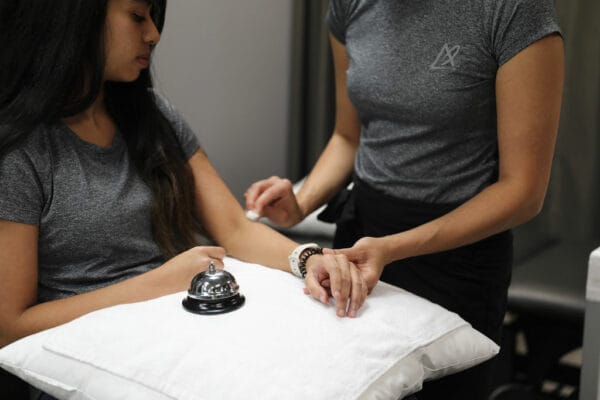
Causes
Lateral epicondylitis usually occurs due to overuse or repetitive movements of the extensor muscles of the forearm. Such an issue can occur due to:
- An over reliance of the extensor muscles because of poor conditioning or injury in the shoulder or upper arm muscles.
- Occupations and nonathletic activities requiring repetitive upper extremity activities and particularly those involving computer use, heavy lifting, forceful forearm pronation (palm face down) and supination (palm face up), and repetitive vibration.
- Improper technique or positioning with equipment i.e. tennis racket.
Risk Factors
While aging is the strongest risk factor associated with lateral epicondylitis, numerous other risk factors have been identified:
-work/non-work related activities requiring repetitive movements,
-training errors,
-misalignments,
-flexibility problems,
-poor circulation,
-strength deficits or a muscle imbalance,
-psychological factors.
Symptoms
- Gradual increase in pain on the lateral aspect of the elbow.
- Weakness in grip strength.
- Worse pain with activities that involve extension of the wrist, e.g. backhand tennis stroke, repetitive use of a screwdriver, or lifting heavy objects.
- In more severe cases, pain can occur with such simple activities as holding a coffee cup or turning a door knob.
Physiotherapy Treatment
There are different types of therapies to treat lateral epicondylitis, all with the same aim: reduce pain, improve function and strengthen the affected muscle. Some of the ways a physiotherapist can help manage and treat your lateral epicondylitis includes:
-Joint Mobilization
– Deep Transverse Frictions
– Modalities – Ultrasound, Electrotherapy, Cyrotherapy, Laser, Extracorporeal Shockwave Therapy
– Orthoses (Bracing)
Exercise Therapy
Stretching – The research and literature shows that strengthening and STRETCHING exercises are the most important components of exercise programmes, for the reason that tendons should not only be strong but also flexible.
Eccentric Exercises
Research has also shown that lateral epicondyitis has shown improvement following treatment utilizing isokinetic eccentric exercise. A great exercise which utilizes this principle is the FlexBar eccentric exercise which has been clinically proven to be effective in providing in improving function with lateral epicondylitis.
Click HERE to book an appointment with a physiotherapist at one of our eight locations.
- Physiotherapy Etobicoke – Triangle Physiotherapy Etobicoke
- Oakville Physiotherapy Clinic – Triangle Physiotherapy Oakville
- Physiotherapy North York – Triangle Physiotherapy North York
- Mississauga Physiotherapy Clinics – Triangle Physiotherapy Mississauga
- Downtown Physiotherapy Clinics – Triangle Physiotherapy King West
- Uptown Physiotherapy Clinics – Triangle Physiotherapy Lawrence Park
- Physiotherapy Clinic Downtown Toronto – Triangle Physiotherapy Queens Quay
- Physiotherapy Clinics Mississauga – Triangle Physiotherapy Erin Mills
Physiotherapy is essential in treating tennis elbow by reducing pain, improving strength, and restoring arm function. If you’re looking for professional physiotherapy services for tennis elbow, there are clinics in physiotherapy Etobicoke, Oakville, North York, Toronto, Lawrence Park, Queens Quay, Erin Mills, Mississauga, and Liberty Village. These clinics offer expert care and personalized treatment plans to help you recover and regain full use of your arm.

